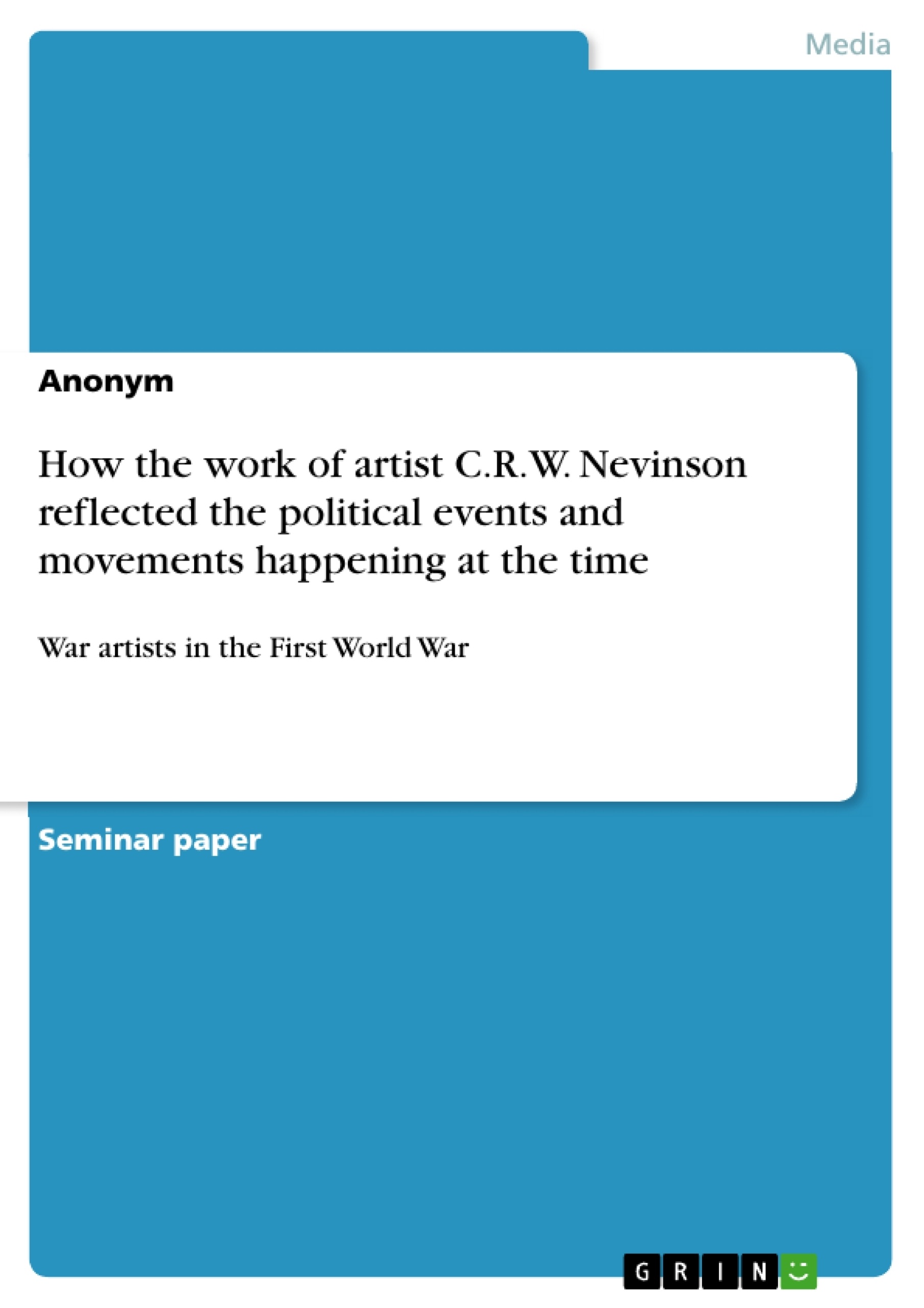C.R.W. Nevinson, like other war artists, painted what he witnessed at first hand at the frontline during the First World War. Yet, his art is not merely reporting the events but likewise an artistic vision and interpretation of it. This paper explores the impact of his work on the perception of the war at the time and seeks to understand the role of "war artist" in the early twentieth century.
Inhaltsverzeichnis (Table of Contents)
- How the work of artist C.R.W. Nevinson (1889-1946) reflected the political events and movements happening at the time:
- The First World War and its impact on Nevinson's work
- Nevinson's artistic background and his time in Paris
- Nevinson's experience as an ambulance driver and his return to London
- Nevinson as an official war artist
- Nevinson's most famous war paintings: La Mitrailleuse and Paths of Glory
- La Mitrailleuse: A depiction of trench warfare and mechanised soldiers
- Paths of Glory: A reflection on the destructive power of mechanised weapons
- Nevinson's paintings and their reception by the public and critics
- The impact of censorship on Nevinson's work
- The commercial success of Nevinson's war paintings
- Conclusion: An artist's work and its reflection of political events
Zielsetzung und Themenschwerpunkte (Objectives and Key Themes)
This text examines the influence of political events on the work of C.R.W. Nevinson, specifically during the First World War. It aims to explore the connection between his artistic style and his experiences as an ambulance driver and official war artist.
- The impact of the First World War on art and culture
- The relationship between art and propaganda
- The role of censorship in wartime art
- The tension between artistic expression and commercial success
- The representation of war in art and its effect on public perception
Zusammenfassung der Kapitel (Chapter Summaries)
The text delves into the life and work of C.R.W. Nevinson, an artist whose paintings reflected the realities of the First World War. It highlights how Nevinson, initially influenced by avant-garde styles, shifted towards a more realistic and sombre style after witnessing the horrors of the battlefield firsthand. Two of his most famous works, La Mitrailleuse and Paths of Glory, are discussed in detail, illustrating the contrasting depictions of war. La Mitrailleuse captures the mechanization and dehumanization of soldiers in the trenches, while Paths of Glory depicts the grim reality of death and destruction. The text explores the public reception of these works, emphasizing the tension between Nevinson's desire for truthful representation and the censorship imposed by the British government.
Schlüsselwörter (Keywords)
The primary focus of this text is on C.R.W. Nevinson, a British artist known for his war paintings. Key themes include the First World War, art and propaganda, censorship, realism, and the tension between artistic expression and commercial success. Specific works discussed include La Mitrailleuse and Paths of Glory, highlighting the impact of the war on Nevinson's style and the public reception of his art.
- Arbeit zitieren
- Anonym (Autor:in), 2014, How the work of artist C.R.W. Nevinson reflected the political events and movements happening at the time, München, GRIN Verlag, https://www.grin.com/document/507033



